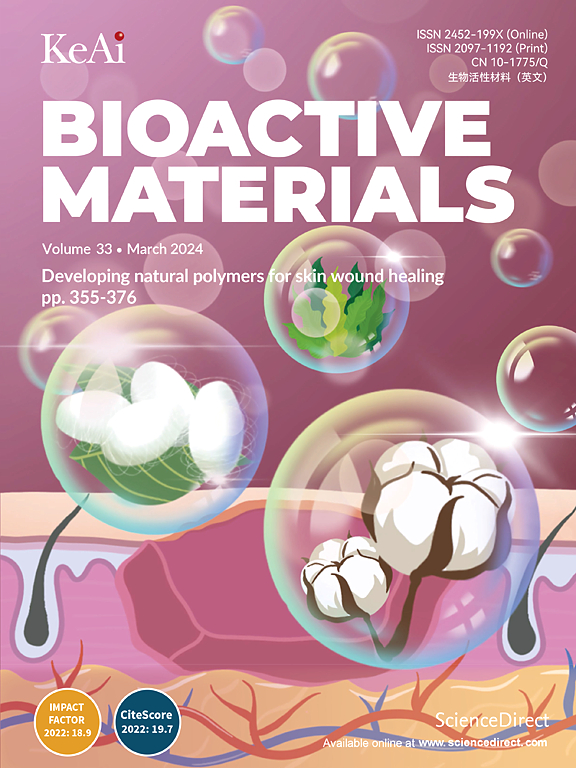Engineered bacterial membrane biomimetic covalent organic framework as nano-immunopotentiator for cancer immunotherapy
IF 18
1区 医学
Q1 ENGINEERING, BIOMEDICAL
引用次数: 0
Abstract
The cellular uptake and tissue dispersion efficiency of nanomedicines are crucial for realizing their biological functionality. As a cutting-edge category of nanomedicine, covalent organic frameworks (COFs)-based photosensitizers, have been extensively employed in cancer phototherapy in recent years. However, the inherent aggregation tendency of COFs hinders their uptake by tumor cells and dispersion within tumor tissues, thereby limiting their therapeutic efficacy. In this study, we employed Fusobacterium nucleatum (F.n.), a prevalent intratumoral bacterium, to construct a bacterium membrane-wrapped COF, COF-306@FM, which is readily taken up by cancer cells and uniformly dispersed within tumor tissues. Meanwhile, the F.n. membrane can also serve as an immune adjuvant to warm up the “cold” tumor immune microenvironment by enhancing the CD8+ T and B cells infiltration, and inducing the formation of tumor-located tertiary lymphoid structures. Consequently, the response rate of αPD-L1 immunotherapy was drastically promoted to efficiently prevent tumor metastasis and recurrence, causing 84.6 % distant tumor inhibition and complete suppression of tumor metastasis. In summary, this innovative approach not only enhances the therapeutic potential of COFs but also opens up new avenues for integrating microbial and nanotechnological strategies in cancer treatment.

求助全文
约1分钟内获得全文
求助全文
来源期刊

Bioactive Materials
Biochemistry, Genetics and Molecular Biology-Biotechnology
CiteScore
28.00
自引率
6.30%
发文量
436
审稿时长
20 days
期刊介绍:
Bioactive Materials is a peer-reviewed research publication that focuses on advancements in bioactive materials. The journal accepts research papers, reviews, and rapid communications in the field of next-generation biomaterials that interact with cells, tissues, and organs in various living organisms.
The primary goal of Bioactive Materials is to promote the science and engineering of biomaterials that exhibit adaptiveness to the biological environment. These materials are specifically designed to stimulate or direct appropriate cell and tissue responses or regulate interactions with microorganisms.
The journal covers a wide range of bioactive materials, including those that are engineered or designed in terms of their physical form (e.g. particulate, fiber), topology (e.g. porosity, surface roughness), or dimensions (ranging from macro to nano-scales). Contributions are sought from the following categories of bioactive materials:
Bioactive metals and alloys
Bioactive inorganics: ceramics, glasses, and carbon-based materials
Bioactive polymers and gels
Bioactive materials derived from natural sources
Bioactive composites
These materials find applications in human and veterinary medicine, such as implants, tissue engineering scaffolds, cell/drug/gene carriers, as well as imaging and sensing devices.
 求助内容:
求助内容: 应助结果提醒方式:
应助结果提醒方式:


